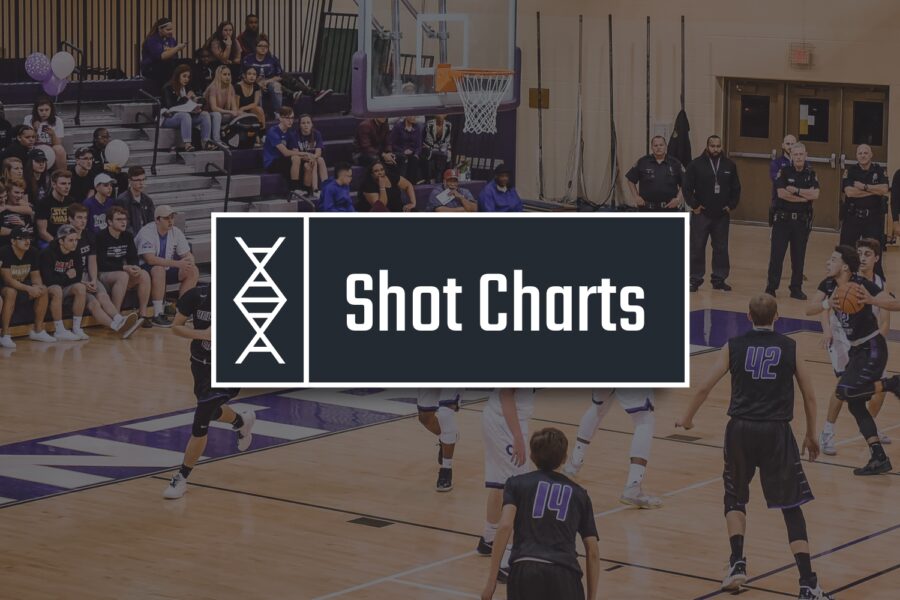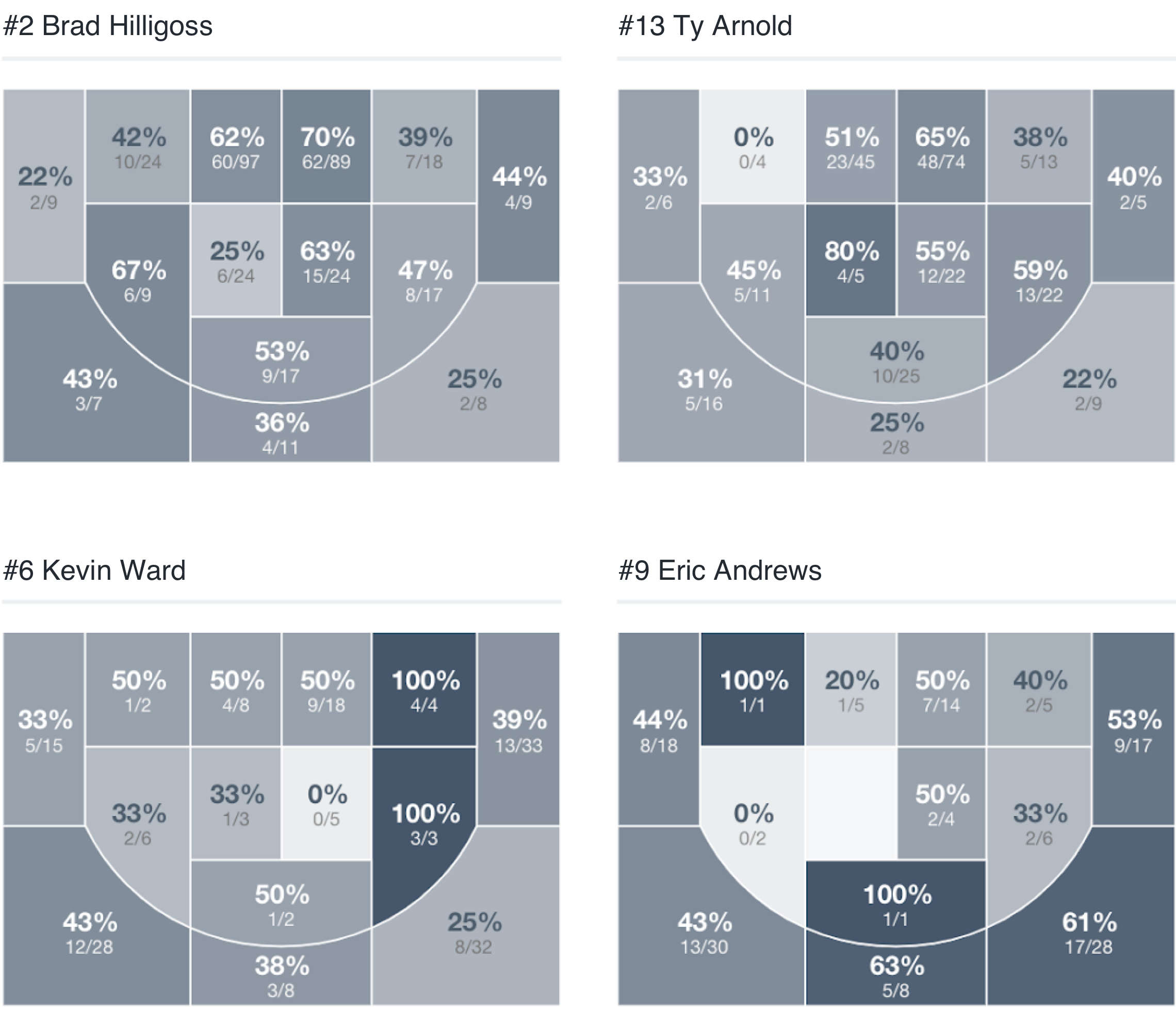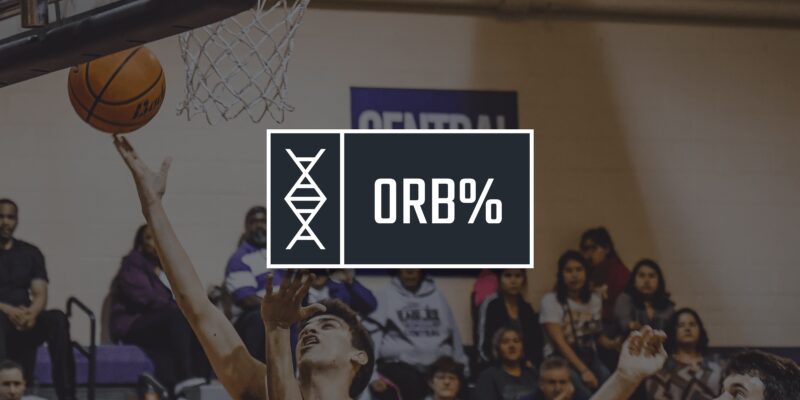See exactly where an offense excels and struggles, then pair the shot chart with video to find valuable insights.
The best way to craft an effective offense is to get your best shooters launching from where they’re most efficient. That’s why it’s so important to use a shot chart to track makes and misses during the game, or later in the evening when reviewing film.
But tracking this data on paper only partially unlocks the value of a shot chart.
The more you can understand why your players excel at a certain area of the floor and struggle at others, the more constructive your coaching will be. Conversely, seeing how your opponent sets up those shots from the hot-handed quadrant can stoke the imagination of a good defensive-minded coach. There’s virtually no downside.
How It Works
Every shot attempted on the floor is mapped to a specific area of the shot chart. Looking at trends over an entire season can give you a precise evaluation of your team’s strengths and weaknesses.
For instance, take this season-long shot chart from a top-ranked high school team.
What’s the common thread? (Spoiler alert: look at the left corners of the charts.)
If this was your opponent and you were looking to force a bad shot, what area of the floor would you try to funnel their offense to?
How Coaches Value It
It’s easy to lose objectivity in the heat of battle. That’s what Chris Horton, the girls basketball coach at Lone Oak High (Texas), realized shot charts fixed.
“When you’re in the games, you’re just in the flow of things,” Horton said. “My assistant coaches see it and we talk about who’s doing what. But in terms of what particular areas they’re scoring from, it’s hard to see until afterward.
“If I’ve got a girl that’s having trouble scoring inside, why? What’s she doing? [The shot chart report] helps me coach them. It helps me big picture with offensive design, but it also helps me help them. I’ll go into each individual area and I’ll pull up the video. It helps me as a team concept and it helps me individually. I’ve had them start looking at their own stuff.”
Having the percentages, and the video showing how they came together, has been a very resourceful scouting tool for some of the sharpest minds on the high school front.
“The numbers always lead us to ask why, what’s the reason behind what we’re seeing here,” Lynden Christian (Wash.) girls basketball coach Brady Bomber said. “Is it because the threes are going in because they’re inside-out threes? Or are they not going in because they’re contested threes?
“Seeing those margins can give you a little bit of an edge. We’ve been able to watch our players and say, ‘Hey, we want you to see how this girl shot the last couple of games tonight, then come in the next day with a few ideas’—’Oh yeah, I’ve watched her shots the last two games, and I see what you’re saying, coach.’”
Beaver Dam (Wisc.) girls basketball coach Tim Chase recalled a recent game where the shot charts showed him that a particular opponent’s top shooter simply did not miss from the left corner. Chase knew they were going to have to face-guard her in that part of the floor all night, a tactic that proved to be the difference.
Perennially appearing in the national polls, Beaver Dam last lost a game to an in-state opponent during the Obama administration. This was one of the few games since that the Beavers had to win by single digits. The discovery from the shot charts proved to make all the difference.
“It was uncanny. She just did not miss from there,” Chase says. “She was averaging 14 points per game, she had zero in that game, and we ended up winning by two points.”
How You Can Use It
Using the data to find out where your opposition tries to get shots, and crafting your defense accordingly, is crucial. If there’s an area where your opponent struggles, you should try to funnel them into that space more often.
From the shot chart report example earlier in the story, there were two main conclusions for an opposing coach:
- Every player is generally better going to their right.
- Every player, save one, is noticeably poorer shooting from the left corner. (Though it’s worth noting the one, Eric Andrews, is weaker attempting threes from the left side, aligning with the left corner theme.)
Now, go to the film and take a look at why they have low percentages across the board. Are they bad looks from the corner? Are they defended well? Are they just not a great shooting team? This can give you some ideas about how you want to funnel offense to that area.
When connected to video, shot charts bring coaches to a whole new level of understanding. It’s an edge the nation’s best programs have fully embraced.
“We use it a lot for the other teams,” said Warren Central (Ind.) boys basketball coach Garrett Winegar. “If we have 10 games on a guy, and we see that he’s 50 percent beyond the arc from the right side of the floor, and only 30 percent from the left side of the floor, we’re going to really try to push him to the left side of the floor. Working on defensive game plans, that’s really helped for us.”
If a post player struggles from one block, but excels from the other, call up video from both spots to see what he or she is doing differently. Tired of watching your opponent rain 3-pointers from the corner? Check out the video and find the holes in your rotation.
“You can’t put a value on that,” Ryan Fretz of Clyde High (Ohio) said. “You really can’t. Just to be able to look at what type of shots he’s taking, you stick it right in the scouting report—75 percent of his shots came off a down screen. Three of his 10 shots were catch-and-shoot, the rest were all taking it to the hole. It allows us to get that edge, to know what the guy is going to do before he gets the ball.”
**
Shot charts have always been useful, but their evolution with video has turned them into one of the most important weapons in a coach’s arsenal. And now it’s easier than ever to get these game-changing statistics. See what Hudl Assist can do for you.










